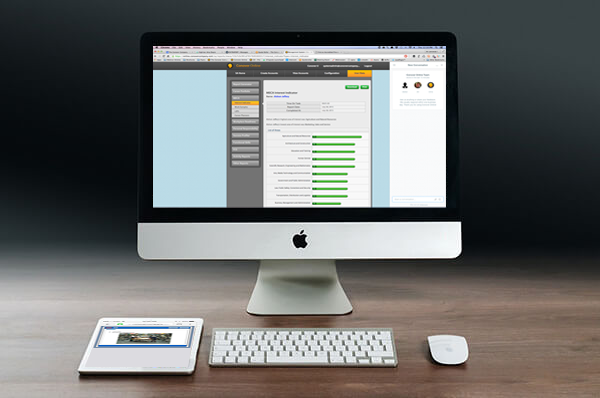Technology is amazing. For millions of people across the world, it opens doors that would have remained closed in the past. A patient in the U.S. can have his X-rays viewed in India to get results quickly and save money in the process. You can hail a taxi with your smartphone. We send unmanned rockets into space to deliver goods to an international space station. You can even go to school without leaving your house.
Technology has changed education and continues to transform it all over the world. Yet even though we have come far with traditional students in these virtual school settings, we still have a way to go to offer quality services to individuals with disabilities.
There are plenty of services and programs out there for younger students with disabilities. It gets harder to teach and to find appropriate programs for these same students as they get older. They need to be challenged, yet supported. They need to begin to think about their future, yet be realistic. They need be taught using appropriate measures. All of these things are addressed in the IDEA law regarding preparing students for life after the supports are gone.

Transition in High School
A school district must have post-secondary goals and objectives in place when a student turns 16 (14 in some states). Basically, the district has to provide a plan for what students are going to do after they graduate or age out of special education services, whichever comes first. Students also need to be put into a “Least Restrictive Environment” to ensure that these learning objectives are met. Given that technology has allowed so many more students to attend virtual schools, there has been an influx of students with disabilities. Since face-to-face interaction between student and teacher is limited in the virtual setting, getting on the same page can be difficult, especially for students with disabilities.
“The technology keeps moving forward, which makes it easier for the artists to tell their stories and paint the pictures they want.” – George Lucas
Playing by the Same Rules
In my experience, providing appropriate assessment and curriculum to students with disabilities has been the biggest hurdle for virtual schools. In the traditional high school setting you have a brick and mortar building full of staff and resources. If something is given to a class and a student with disabilities needs additional help, a teacher or paraprofessional can walk over and provide that assistance. In the virtual world, it is not that easy. There is less personal contact so it can be more difficult to provide the same kind of help and to provide adequate services.
This is exactly why the U.S. Department of Education released a letter to communicate that the IDEA law applies to virtual schools, too. Virtual schools have increased their enrollment greatly, so this is very important. In the 2013-14 school year there were almost 200,000 students enrolled in virtual schools.
Providing a quality education and special education services in a virtual setting does not need to be hard – you just have to know what to look for. Below is a checklist of what to look for if you have a student in a virtual setting who needs special education services.
- Age-Appropriate – You are dealing with young adults when you begin the transition process. You want to make sure that the program or service you are using is designed for young adults and adults so that the student can relate to what is on screen. Having cartoon characters or programs that are childish does no good for anyone.
- Post-Secondary Goals – Don’t only write down a goal. You also need to have a course of study with a plan on how the student is going to attain that goal. Include the specific course offerings that are available to you so that the plan can be executed properly.
- Technology – This doesn’t only apply to the content, it applies to the backend of the system too. Managing student data, running reports, and showing results in an understandable format are all crucial in special education. It only makes a teacher’s job harder if a program is not built to provide the information needed.
- Give Feedback – The real world is full of feedback. There are comments and likes on social media. You get reviews when you work at a job. Giving and receiving feedback is critical to help both the teacher and the student. The only way to give quality feedback is point #5.
- Data, Data, Data – This is critical. I had a Director of Special Education tell me, “It doesn’t matter if you did it. If you can’t show that you did it, then you didn’t do it.” This is absolutely true in the world of special education. When you are in a virtual setting, you cannot rely on the same kinds of data that you have in a brick and mortar setting. You need to be able to measure scores, time on task, knowledge and checkpoints to compare where students started with where they are now. The only way to do that is with data.
I love technology. I think that it allows for a low barrier of entry to many services, including education. Over the next five years, we are going to see an even bigger shift in education because technology is only getting better and moving faster. Virtual schools are in the perfect position to take advantage of new technologies to serve their students, and, in so doing, provide quality education and services to all students.
